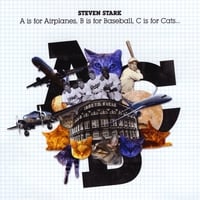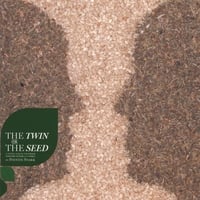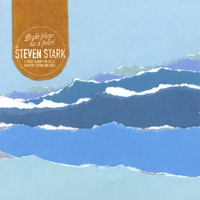The last twelve symphonies written by Haydn are often referred to as the London Symphonies. They were written specifically for concerts in London, and many were even written in that city during Haydn's two lengthy and successful visits towards the end of his career.
Although there is MUCH to explore in all of Haydn's symphonies, these are often considered his crowning achievement in the symphonic form. He had done much to develop the form of the symphony over his career (he is often referred to as "the father of the symphony"), and composers, such as his great friend Mozart, took a lot of Haydn's ideas and ran with them, helping to standardize them even more.
Haydn, innovator though he was, also lived long enough to see what Mozart and others had done with the symphony and was able to be influenced in return! Basically, he was in the unique position of being both an innovator and a "perfecter" of the classical symphony. He also did the same with other hallmark genres of the Viennese Classical style - the piano sonata, and particularly the string quartet - where his personality shines forth perhaps more than in any other area.
But back to the London Symphonies. I like to listen systematically, so I though I would rank the works as a method to explore them more. I wouldn't take my ranking too seriously of course. They might change dramatically after another year of listening! But it's a fun way to explore Haydn's music, so why not?
My methodology is fairly haphazard, but there is still a bit of one, so here it is! I weight the first movement substantially more than the others in importance. The second slow movement is also very important - a "weighty" part of the piece. The last movement has less importance, it is usually a bit of light (albeit fast and furious) fun at the end, and the minuet movement is definitely last - it is mostly a nice break from the more substantive sections. When judging movements, I give a lot of points to themes I deem beautiful, to counterpoint, and to the overall melodic flow and structure of the piece. And by the way, the first movement of each symphony (except one) begins with a slow introduction before the main themse are presented.
I will give a few comments on each symphony, but these are just brief summaries of my opinions. I am spending a lot more time listening to and writing music than writing words these days - but hopefully there is enough to make exploring these pieces even more interesting for any interested music-lovers.
I have explored many different recordings of these pieces, but my default choice is The London Symphony Orchestra conducted by Eugene Jochum. Sometimes the sound is a bit too reverb-y and mushy, but there is almost always passionate music-making, rousing tempos, joy and a certain grandness to the sound.
I also want to say that Haydn is my all-around favorite composer/musician for many reasons. All of his symphonies receive A's in my grade book. But it is still fun to give out some pluses and minuses! So here goes!
12 - Symphony No. 96 in D Major "The Miracle". This work received its nickname because of a London performance where the audience rushed the stage in enthusiasm for the music. Then a chandelier fell to the ground where they had been sitting and no one was hurt! The story seems to be fairly credible, however somehow the nicknamers got the wrong symphony! When studying the dates and programs, music historians discovered that it was actually symphony No. 102 in Bb that was played at that concert. So sometimes No. 102 is called "The Miracle", but mostly No. 96 still wears the title.
The first theme of this piece is quite good. However, the rest of the movement seems a bit thin. The second and third movements are quite nice, and the fourth is lively, albeit a little thin on counterpoint.
11 - Symphony No. 99 in E flat Major. This piece is still growing on me for sure. It is one of the few where listening to a different recording from the Jochum has served me well. Because of this, I may have a bit of a late start on this symphony compared to the others. I prefer the Royal Concertgebouw orchestra conducted by Sir Colin Davis. The Jochum seems a bit stuffy at times, and the Davis recording is crisper and livelier. The second movement in particular came alive to me when I heard the Davis recording.
The first theme is energetic and presented in the tonic and dominant keys. There is a second, contrasting theme as well which is a bit "proper" sounding to my ear. The Exposition as a whole, and particularly the opening theme and bridge materials associated with it, are actually pretty great. And the third and fourth movements are nice. At least one respected critic I have read ranks this symphony in his top four or five out of the twelve. I will keep listening. I predict that it could keeping growing on me!
The problem is that all the London twelve are pretty great (and still growing on me). I guess one of them has to be number 11. ;)
11 - Symphony No. 99 in E flat Major. This piece is still growing on me for sure. It is one of the few where listening to a different recording from the Jochum has served me well. Because of this, I may have a bit of a late start on this symphony compared to the others. I prefer the Royal Concertgebouw orchestra conducted by Sir Colin Davis. The Jochum seems a bit stuffy at times, and the Davis recording is crisper and livelier. The second movement in particular came alive to me when I heard the Davis recording.
The first theme is energetic and presented in the tonic and dominant keys. There is a second, contrasting theme as well which is a bit "proper" sounding to my ear. The Exposition as a whole, and particularly the opening theme and bridge materials associated with it, are actually pretty great. And the third and fourth movements are nice. At least one respected critic I have read ranks this symphony in his top four or five out of the twelve. I will keep listening. I predict that it could keeping growing on me!
The problem is that all the London twelve are pretty great (and still growing on me). I guess one of them has to be number 11. ;)
10 - Symphony No. 102 in Bb Major. This is regarded as one of Haydn's absolute best works, however the themes are not super appealing to me. The first is a bit short and repetitious and the second is hard to pick out. From the development to the ending is absolutely fantastic, however. The second movement is one of the best out of the London twelve. The third and fourth movements are OK.
9 - Symphony No. 95 in C Minor. This is the only minor symphony out of the twelve. And it is also the only one not to feature a slow introduction before the exposition. Once again the themes are not super memorable and the movement is not very heavy on counterpoint. The second and third movements are wonderful, however. They feature beautiful cello solos, particularly the trio (middle part) of the minuet (3rd mvt). And the last movement is one of Haydn's very best. From about the middle point on, this short movement moves likes the dickens with tons of counterpoint.
I will continue this series soon. In the next installation, I will include a brief summary of sonata-allegro form, which is used in all of Haydn's opening movements (as in all "classical" symphonies) and often in other movements as well.



No comments:
Post a Comment